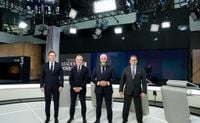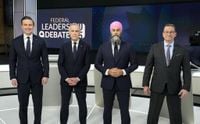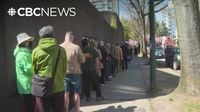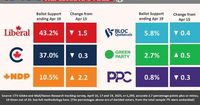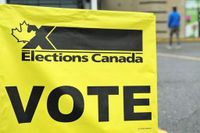As Canadians continue to head to the polls for advance voting, Elections Canada has reported a remarkable turnout. Preliminary figures reveal that nearly two million Canadians cast their votes on April 18, 2025, the first day of advance polls, setting a new record for early voting in the federal election. As Maurice Katz reports, this surge in participation comes amidst reports of long lineups at polling stations across the country.
The federal Liberals and the New Democratic Party (NDP) both unveiled their costed campaign platforms on April 19, 2025, as Elections Canada confirmed the impressive turnout. The agency noted that on the first day alone, almost two million Canadians participated in the electoral process, highlighting a strong engagement among voters.
In Prince Edward Island, voters turned out in droves, with many waiting in lines for over an hour. Kathryn Lewis, who voted at the Simmons Sports Centre in Charlottetown, expressed her enthusiasm: "I think it's going to be a really busy election, so I wanted to vote now instead of waiting in line on election day. It was excellent. They have a lot of people helping out." This sentiment reflects a broader trend as Canadians express their eagerness to participate in the democratic process.
As voters in Saskatoon shared their concerns about the economy, health care, and democracy, the advance voting period continued into its second day. With nearly two million people casting early ballots by April 19, the record-breaking turnout has sparked discussions about the importance of civic engagement in Canada.
The Toronto Sun is providing live coverage of Canada’s 45th general election, with the election set for April 28, 2025. As the campaign unfolds, the Liberal Party has pledged billions in new spending, marking a significant shift in priorities from its previous direction under former Prime Minister Justin Trudeau.
According to Nanos Research, the Liberals hold a six-point lead over the Conservatives in recent polling data. The three-day rolling sample from April 16 to 19 shows the Liberals at 43 percent and the Conservatives at 37 percent nationally. The NDP has risen to 11 percent, followed by the Bloc Quebecois at six percent, the Green Party at three percent, and the People’s Party of Canada at one percent.
Regionally, the Liberals are leading in Ontario, Atlantic Canada, and Quebec, while the Conservatives maintain strength in the Prairies and have regained a slight lead in British Columbia. In Ontario, the Liberals have a 10-point advantage, with 48 percent support compared to the Conservatives' 38 percent. In Quebec, the Liberals are at 42 percent, while the Conservatives sit at 21 percent, with the Bloc Quebecois in second place at 26 percent.
The Conservatives continue to dominate the Prairies, boasting 54 percent support, while in British Columbia, the Liberals have dropped to 40 percent, with the Conservatives at 43 percent. In the Atlantic region, the Liberals still hold a strong lead with 52 percent, compared to 32 percent for the Conservatives.
As the election date approaches, voters are increasingly focusing on key issues. In Vancouver, a poll conducted by Vancouver Is Awesome revealed that 45 percent of participants cited U.S. President Donald Trump and his tariffs as the top issue influencing their vote. The cost of living follows closely behind, with 26 percent of locals prioritizing it. Other issues, such as immigration and housing, garnered significantly less attention.
On the campaign trail, Conservative Leader Pierre Poilievre has emphasized the need for cuts to government spending, arguing that inflation is driven by excessive spending. He stated, "Inflation is what happens when governments spend money they don't have, so they just print the cash. More money bidding on a fixed supply of goods equals higher prices for everything." Poilievre has proposed slashing Ottawa's consultant budget by $10 billion to address these economic concerns.
Statistics Canada recently reported that the national inflation rate cooled slightly to 2.3 percent in March, while food prices rose by 3.2 percent year-over-year. In contrast, Liberal Leader Mark Carney has pitched his platform as an investment in Canada's self-reliance, particularly in light of the trade war with the United States. Carney's campaign has focused on the need for substantial investments to stimulate the economy amid global uncertainties.
Carney, who previously served as governor of the Bank of England, has faced criticism from Poilievre, who accused him of "printing money" during his tenure. Carney has countered by framing the current crisis as a challenge posed by Trump, asserting that he is the best candidate to counteract the U.S. president's influence on Canada.
Meanwhile, NDP Leader Jagmeet Singh has campaigned on the importance of not concentrating power in a single party, urging voters to consider a more balanced approach to governance. As the election draws nearer, all parties are ramping up their efforts to connect with voters and address their concerns.
As Canadians continue to participate in advance voting, the political landscape remains dynamic, with shifting support for the major parties. With election day set for April 28, 2025, the outcome remains uncertain, but the record turnout in advance polling signals a heightened level of engagement among the electorate.
In the lead-up to the election, the stakes are high for all parties as they seek to secure their positions and respond to the pressing issues facing Canadians. With a diverse range of voices and perspectives, the upcoming election is poised to shape the future of Canada.
